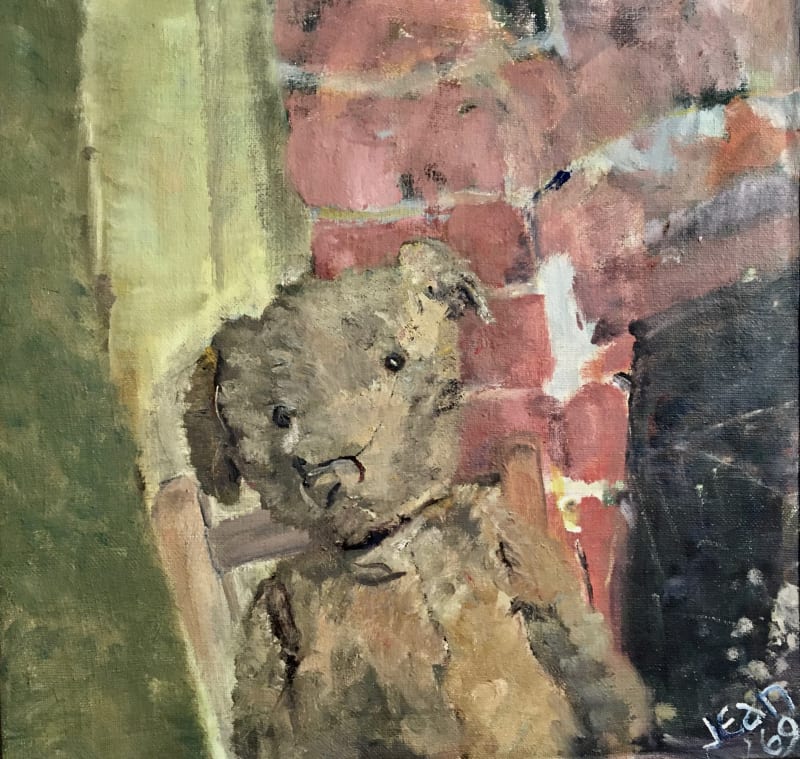Four years ago we discovered a treasure trove of over 300 canvases covered in dust and cobwebs stacked up neatly in a corner of an isolated cottage on the edge of Dartmoor. We had been invited by the grandson of artist Jean Jones to see the forgotten work and thus began a journey of discovery as we put together the first exhibition of her work in 40 years. The latest show, Solace of Place, is packed with Jean’s bright, playful pictures and reveals how Devon and Dartmoor in particular offered Jean a refuge over the years.
As a child Jean Jones spent several years near Noss Mayo, South Devon as her father, Samuel Robinson, a successful civil servant, recuperated after the horrors of the First World War.
Jean was able to return to the landscape she loved when she married a young Oxford academic, John Jones, whose parents lived in the Devonshire countryside. In 1958, they bought a cottage on the southern edge of Dartmoor. It became Jean’s refuge
and from the late 1960s, she exhibited regularly in Oxford galleries and in October 1980 was honoured with a solo exhibition at the Ashmolean Museum. She continued to paint into old age and died in 2012.
Whilst Jean did not receive due recognition for her work during her lifetime, she is now being acknowledged as the skilful and talented painter she was. Indeed one of her paintings – “Dartmoor : China Clay” - is curently on the wall at The Box, Plymouth as part of its “People and Place” Art Collection Showcase.
Art historian and critic Michael Kurtz has written Jean Jones' biography which will be published next year. In it he describes one of the paintings featured in the exhibition as follows:
"From Legis Mire to Gutter Tor, 1986, always had pride of place in the sitting room alongside Robert the Bear and a few recent experiments from Primrose Hill. In this Devon landscape, taller than Jones’s usual thirty by thirty-inch canvas, the moor glistens with flecks of gold, green, and brown in the late summer sun. The River Plym slips by in the corner, leaving just enough dry land for Jean’s red, blue and yellow signature. Standing in for the windows at Yellands, the large picture brought Dartmoor to London and became even more precious when they could no longer travel west in Jean’s final years. Her warped edges are in action here. The landscape fades away, as if we can view the curvature of the earth on Dartmoor, as if this patch of land is the size of a continent. In their lives it was. And the sky is one of her best, its purple-greys and green-blues ascending from left and right amidst variegated yellows and whites, working hard to reach the navy blue to the top left – all bouncing off each other, the grey so grey and the blue so deep because of its relation to the paler tones below. The earth and clouds work to frame the picture’s delicate central subject: two slim trees which almost fade into the background, their green leaves blending into the bracken. One irresistible theory is that these two pussy willows represent Jean and John. They stand on the moor, alone but together, vulnerable but strong against the wind, smiling in the sun. ‘Difficult as their marriage had been, it had lasted 63 years.’ "


